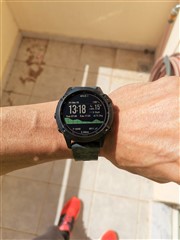Since some discussions emerging about next generation watches I was thinking what we should expect. I am using Garmin since Fenix 2 (I have F6 Solar) and also used other smart watches such as Samsung Galaxy and Amazfit Stratos 3 Sport watch.
Some people mentioned next generation models should have a better resolution screen or OLED which significant decreases battery life.
Compared side by side Stratos Transflective 320x320 display with F6 260x260 display F6 is better. I prefer F6 larger fonts and icons which are far more visible when I check my watch from distance during my run or cycling. I don't need tiny fonts to read long texts or other advanced smart watch features in a pure sport watch.
In addition Garmin competitors (Polar, Coros, Suunto 3/5/7) also use mid resolution displays and if we compare with Garmin Venu or Suunto 9 high res displays they provide disappointing battery life
I would definitely prefer increased battery life, more responsive menu's, lighter casing, SW improvements and maybe a touchscreen and some aesthetical changes.



